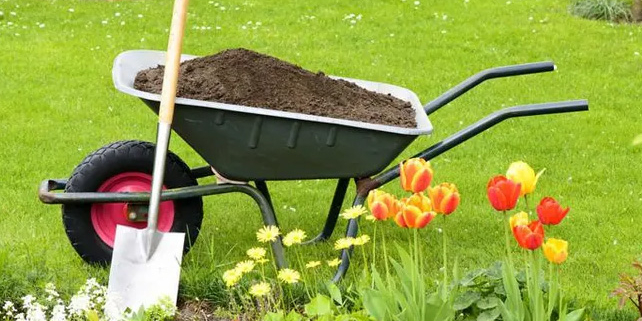The Ultimate Guide to Yard Care: Transforming Your Outdoor Space
A well-maintained yard not only enhances the beauty of your home but also provides a serene space for relaxation and recreation. Whether you are a seasoned gardener or a novice just starting out, this comprehensive guide will walk you through the essentials of yard care to help you create and maintain a stunning outdoor sanctuary.
1. Planning and Design
Assess Your Space
Before diving into yard care, take a good look at your outdoor space. Assess the size, layout, soil type, and existing plants. Consider your climate and how much sunlight different areas receive throughout the day. This assessment will help you determine the best plants and design elements for your yard.
Create a Design Plan
Sketch a rough design of your yard. Divide it into sections for different purposes: a flower garden, a vegetable patch, a lawn area, and perhaps a relaxing patio or deck. Incorporate pathways, water features, and other decorative elements to enhance the overall appeal.
2. Soil Preparation
Test Your Soil
Healthy soil is the foundation of a thriving garden. Test your soil to determine its pH level and nutrient content. You can purchase a soil testing kit from a garden center or send a sample to a local extension office.
Amend the Soil
Based on the results of your soil test, amend the soil to improve its quality. Add organic matter such as compost, manure, or peat moss to enhance fertility and drainage. If the pH level is too high or too low, adjust it by adding lime or sulfur accordingly.
3. Planting
Choose the Right Plants
Select plants that are well-suited to your climate and soil conditions. Native plants are an excellent choice as they are adapted to the local environment and require less maintenance. Consider a mix of perennials and annuals for continuous color throughout the year.
Proper Planting Techniques
Planting at the right depth and spacing is crucial for healthy growth. Dig a hole twice as wide as the root ball and slightly deeper. Place the plant in the hole, backfill with soil, and water thoroughly. Mulch around the base to retain moisture and suppress weeds.
4. Lawn Care
Mowing
Mow your lawn regularly but avoid cutting it too short. Aim to remove no more than one-third of the grass height in a single mowing. Keep your mower blades sharp to ensure a clean cut and vary your mowing pattern to prevent soil compaction.
Watering
Water deeply and infrequently rather than shallowly and often. Early morning is the best time to water, as it allows the grass to dry during the day, reducing the risk of disease. Use a sprinkler system or a soaker hose to ensure even coverage.
Fertilizing
Fertilize your lawn at least twice a year – in spring and fall. Choose a balanced, slow-release fertilizer and follow the recommended application rates. Avoid over-fertilizing, which can lead to nutrient runoff and environmental damage.
5. Pruning and Trimming
Prune Regularly
Regular pruning keeps plants healthy and encourages new growth. Remove dead, diseased, or damaged branches and shape plants to maintain their natural form. Use clean, sharp tools to make precise cuts.
Hedge Trimming
Trim hedges to maintain their shape and promote dense growth. Trim slightly wider at the base to allow sunlight to reach lower branches. Regular trimming prevents hedges from becoming overgrown and unsightly.
6. Weed and Pest Control
Weed Management
Weeds compete with your plants for nutrients, water, and sunlight. Mulching helps suppress weeds by blocking light and preventing seed germination. Hand-pull weeds regularly and consider using a pre-emergent herbicide in early spring to prevent weed seeds from sprouting.
Pest Control
Monitor your plants for signs of pests and take action promptly. Use organic pest control methods such as neem oil, insecticidal soap, or introducing beneficial insects like ladybugs. For severe infestations, you may need to resort to chemical treatments, but always follow the label instructions carefully.
7. Seasonal Maintenance
Spring
Spring is the time to prepare your yard for the growing season. Clean up debris, edge flower beds, and apply mulch. Start planting new flowers and vegetables, and fertilize your lawn and garden.
Summer
Maintain regular watering and mowing schedules. Deadhead flowers to encourage continuous blooming, and monitor for pests and diseases. Keep an eye on your plants’ water needs, especially during hot, dry spells.
Fall
In the fall, focus on cleanup and preparation for winter. Rake leaves, remove dead plants, and add a layer of mulch to protect the soil. Plant spring-blooming bulbs and fertilize your lawn before the first frost.
Winter
Winter is a time for rest and planning. Protect delicate plants with burlap or other coverings. Sharpen and clean your tools, and start planning next year’s garden.
Conclusion
Caring for your yard is a rewarding endeavor that enhances the beauty and functionality of your outdoor space. By following these yard care tips, you can create a lush, healthy, and vibrant yard that you and your family can enjoy year-round. Remember, a little effort and consistency go a long way in achieving the yard of your dreams. Happy gardening!






Leave a Reply
Want to join the discussion?Feel free to contribute!